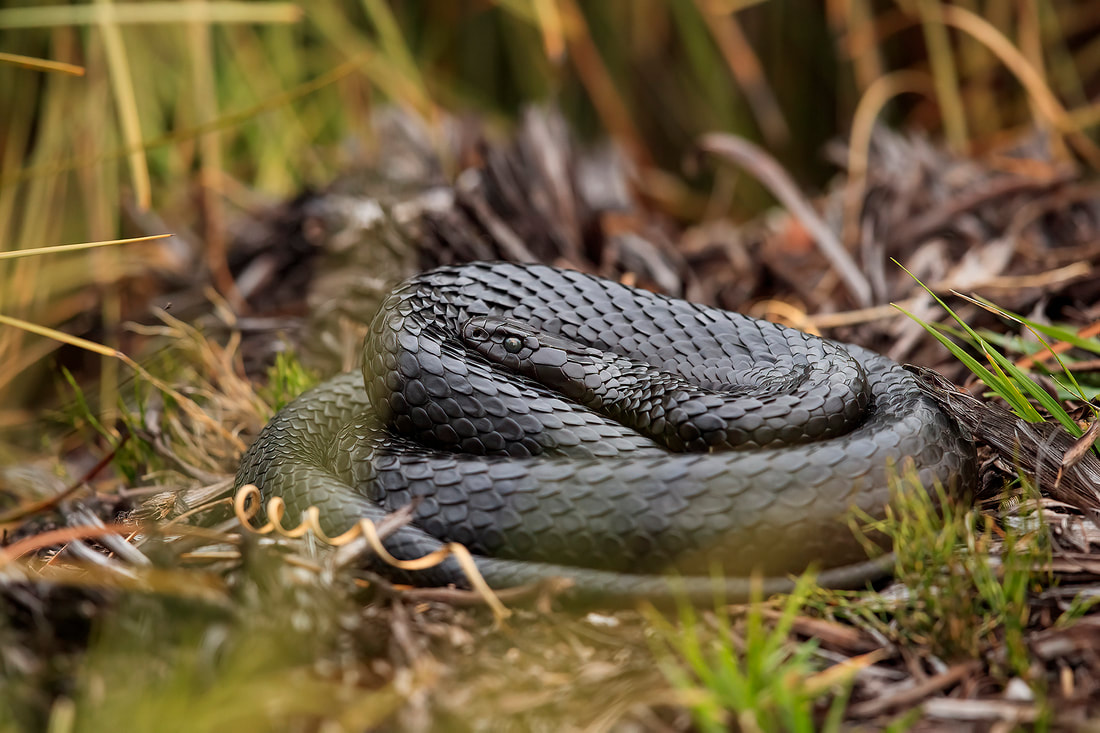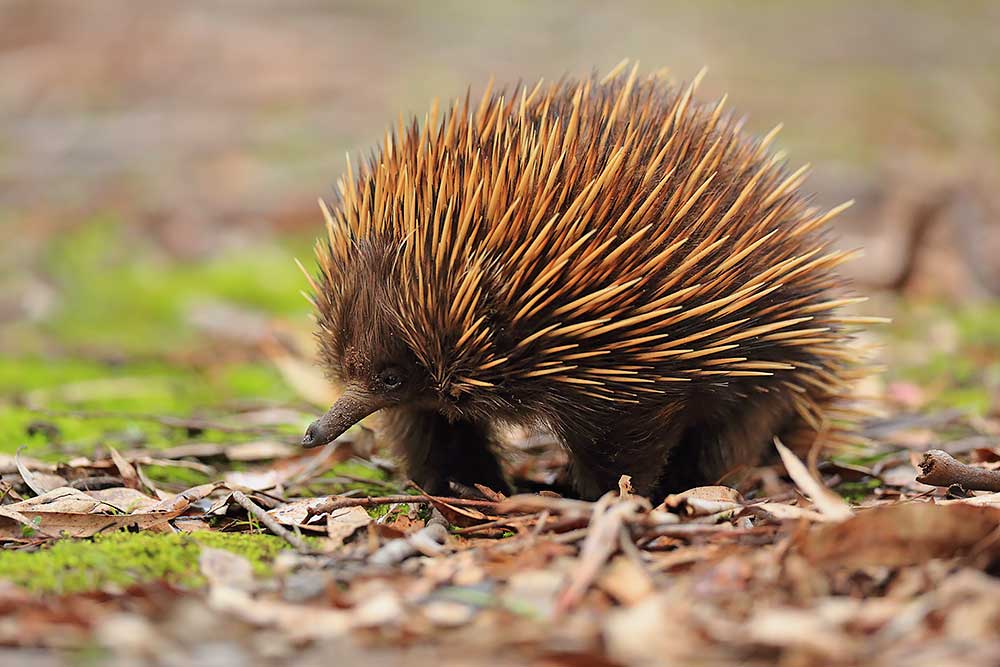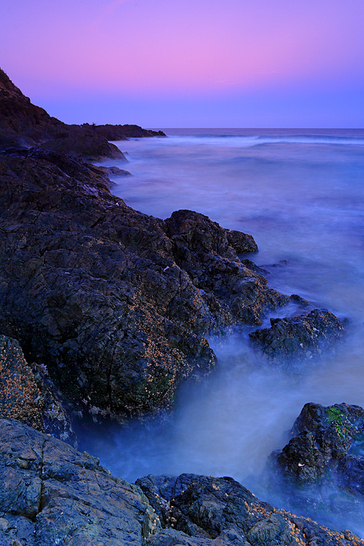|
I absolutely love being in the Antipodes as the wildlife here is not only unique, but it is utterly captivating, and so it was a delight to head back and spend another couple of weeks searching for and photographing some icons. Just as we did in the previous trip, we started on the mainland of Australia, photographing wildlife in the state of Victoria, before flying across the Bass Strait to Tasmania. Around the city of Geelong, we enjoyed photographing a wealth of wildlife including corellas, emu, eastern grey kangaroo, grey-headed flying fox and koala too. After a fantastic few days photographing the wild delights of the mainland, including some Australian oddities, we hopped on a plane from Melbourne down to the city of Launceston in Tasmania. From here we headed to the Tasmania arboretum for some great platypus sightings and photography. We then headed up into the hills and spent the next five days just immersing ourselves in the wild world of Tasmania's rugged mountains. Here photographic highlights included tiger snake, wombat, wallabies and several endemic birds. We headed back down from Tasmania's Highlands back down towards the coast and stopped once again at the Tasmanian Arboretum. We thought our previous visit was remarkable for the platypus encounters we enjoyed, but this time it was exceptional. The absolute highlight was a pair of platypus fighting after an attempt at mating. Over the next few days we continued by exploring the north-east of Tasmania, enjoying more wonderful photography opportunities including Forrester's kangaroos. After a great period photographing in the northern reaches of Tasmania, it was time to head south towards Hobart. We spent an evening in Hobart, primarily as a rest stop, before heading over to Bruny Island the following day. Here, we would be staying close to the Inala property and our hope was to photograph some of the region's iconic birdlife including the forty-spotted pardalote. As you can see, we had a magical couple of weeks photographing some of Australia's most sought-after species. It was great to be back in the bush and seeing some of my favourite Aussie wildlife.
0 Comments
As many of you will know, I spent a year living in Australia and absolutely fell in love with the country's magical wildlife. So when Wildlife Worldwide asked whether I would be interested in leading a dedicated photography tour there, I of course jumped at the chance. That was when Covid decided to pop its head up and the first couple of departures were postponed for 2 whole years. Finally, in December 2022, I was given the chance to take the helm for our very first departure. We started our adventures in the city of Melbourne and soon headed towards the city of Geelong and the You Yangs. Here we joined local naturalist and koala expert Roger, who we hoped would find us this arboreal member of the marsupial family. We were in luck. We then headed into the city of Geelong as we went to visit the colony of grey-headed flying foxes that call the mature trees home. It was here that we were also treated to some incredible views of eastern rosella. This colourful species of parrot are usually shy and rarely pose like this individual felt compelled to do. The next day, we headed to the nearby Serendip Sanctuary to photograph the resident eastern grey kangaroos and a wealth of other species that call this area home. It was a great first couple of days getting back in the swing of things with Australian wildlife. I absolutely love being with macropods (the family of marsupials to which kangaroos belong) and getting so close to such a big mob was absolutely fantastic. With a great couple of days behind us, it was time to return to Melbourne for a night before our flight across the Bass Strait and on to Tasmania. We started our stay in Tasmania by exploring the area's northern wilderness regions. Here the group enjoyed some wonderful views and photography of some truly iconic Australian species, including wombat, echidna and Bennett's wallaby. Finally, after a magical couple of weeks down under, we headed south to Bruny Island. The undoubted highlight here was the chance to see and photograph the diminutive, but critically endangered forty-spotted pardalote. It wouldn't be long before I would be back on Australian soil, hoping to photograph more wildlife in Victoria and Tasmania
After our little stay on the bank of the Murray River, it was time to head to what is becoming increasingly known as Australia's Galapagos. Kangaroo Island is located to the south-west of the Fleurieu Peninsula and home to astonishing variety of wildlife. Some of this wildlife has been introduced but others are found nowhere else in Australia. We caught the morning ferry and started our drive across the 150 km island hoping to camp on the edge of Flinders Chase National Park. With a quick stop in the island's main township of Kingscote, we arrived at our camp site after a couple of hours (driving slowly to avoid the plentiful wildlife). Within a few minutes of setting up the tent we decided to go for a little walk around the campsite and it wasn't long before we found a particularly obliging critter ... This large Koala was in its shaggy winter coat and was on the move to try and take advantage of a small patch of gum trees. It's really unusual to see a Koala on the ground, particularly one that wasn't afraid of my presence. It was an incredible half an hour to watch this spectacular Koala making its way across the forest floor. What really amazed me was the fact that the Koala had to keep stopping regularly as it was simply too exhausted to carry on. It eventually found a tree it was happy with and went about the laborious climb up to the high branches. We thought it was best to leave the Koala in peace and allow it to rest for the remainder of the afternoon, we went on a slightly longer walk in search of some of the other wildlife that can be found on the island. It was within only a couple of minutes that my girlfriend spotted the unique Short-beaked Echidna. These again can be incredibly shy creatures and you have to be very careful not to scare them. The Echidna is a monotreme, like the Platypus, meaning that they are egg laying mammals. Having not seen any Echidna on our journey so far, it seemed that Kangaroo Island was awash these funny little mammals. Over the next few days we encountered 15 different individuals but none posed as nicely as the one above. The area is also famed for the Tammar Wallaby which is surprisingly small. Sadly these tiny little marsupials are only found in a few select locations across Australia but they seem to be thriving here. The coastal wildlife is just as impressive as that found on terra firma, particularly the eared-seals found at a variety of locations across the island. There is one place on the island that I had read about as a a truly spectacular landscape, Remarkable Rocks, they certainly live up to the hype ... Overall it was an amazing few days on Kangaroo Island but I only wish I could have had more time to really do the island justice. We were blessed with the weather, for the most part, and the wildlife was incredibly cooperative but we just didn't have the time or the money to really make the most of this incredible destination.
After our couple of nights in Port Stephens, it was time once more to move northwards along the eastern coast of Australia. Our next stop on this journey was Port Macquarie. Here we decided to stay close to Flynns Beach and make the most of the gorgeous coastline. We arrived around lunch time and set up our tent under the shade of the gum trees, after which Vic was reading her book and happened to look up and see this little fella ... In the afternoon we went for a little walk and enjoyed the wonderful beaches and seascapes. The next day the Koala seemed to be a little elusive and we were struggling to spot it, eventually (with the help of a campsite member of staff) we spotted it high in a gum tree. We were luck to also have a regular influx of Rainbow Lorikeets. We then headed down to the coast to enjoy the colours and scenery at sunset. After a wonderful evening, watching the world go by and photographing the rocky shore at the edge of the beach, we headed back to camp for the evening knowing that tomorrow we would be moving on again. This time to Coffs Harbour.
There was one last wildlife encounter before we left though and this time it was a really intimate experience with the Koala who climbed down the tree next to us and headed back up another tree. With a leap to a third tree it settled itself down and posed for a few images. Sadly, the leap was impossible to photography ... imagine a leaping Koala shot! |
AuthorBret Charman Archives
July 2024
Categories
All
|













































